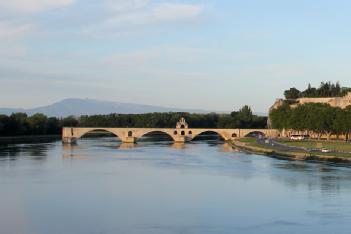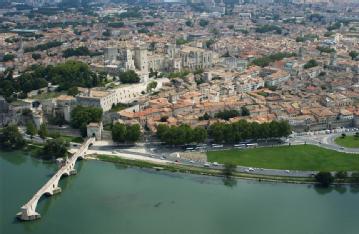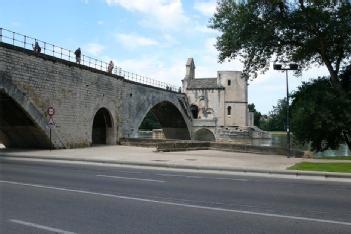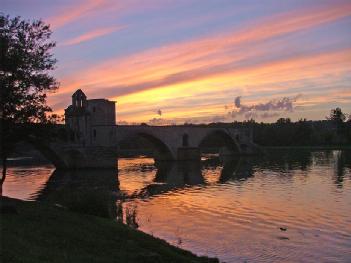
Pont Saint-Bénézet - Pont d'Avignon |
84000 Avignon, France (Provence-Alpes-Cote d'Azur) |
|
| Adresse |
|
| Surface d'exposition | - inconnue pour le moment |
Ponts et Tunnels
- Patrimoine mondial
|
Heures d'ouverture
|
|
|
Situation de 04/2023
|
Free entry. Entrée gratuite. |
| Contact | Unknown contact data for this museum - please help via contact form. Contact inconnu pour ce musée. Vous pouvez nous faire parvenir les infos par le formulaire de contact. |
| Page web |
whc.unesco.org/fr/list/228 whc.unesco.org/en/list/228 |
| Localisation / directions |
Der auf festem Land gelegene Teil des Pont Saint-Bénézet befindet sich unmittelbar außerhalb der Stadtmauer von Avignon am Südostufer des Flusses. Er beginnt nahe dem Rocher des Doms und ist mit einem Wachturm des Palais des Papes verbunden. Der Boulevard du Quai de la Ligne verläuft unter dem ersten Brückenbogen. Der über dem Wasser gelegene Teil des Pont Saint-Bénézet ist in Richtung der Île de la Barthelasse, einer Insel zwischen Avignon und Villeneuve-lès-Avignon, gebaut und überspannt etwa zwei Drittel der Breite des östlichen Flussarmes. |
| Description | Wikipedia: Bénézet commença en 1177 la construction du pont sur des restes de culées romaines. Il fut achevé en 1185 et enjambait alors le Rhône sur 915 mètres avec un angle droit pour offrir moins de prise aux forts courants. Il comportait à l'origine 22 arches, il n'en reste que quatre. À l'origine, seules les piles étaient en pierre et le tablier était alors en bois. L'ouvrage fut reconstruit en maçonnerie entre 1234 et 12373. Le pont Saint-Bénézet ou pont d'Avignon a été rendu célèbre par la chanson populaire Sur le pont d'Avignon. La chanson remonterait au XVe siècle1. On ne connaît ni l'auteur, ni l'origine de la chanson, mais elle devient populaire en 1853 lorsque le compositeur Adolphe Adam la reprend dans son opéra comique, Le Sourd ou l'Auberge pleine2. Les danses se faisaient à l'origine sur des berges, c'est pourquoi certains anciens parlent encore de la chanson en disant « sous le pont d'Avignon » et non pas « sur le pont ». Ce n'est pas une chanson « finie », ce qui peut expliquer le grand nombre de variantes qui existent. Ainsi, tous les métiers de l'époque peuvent être repris. |
[dsp_museum_detail.cfm]
| Mentions légales | Plus d'informations |





